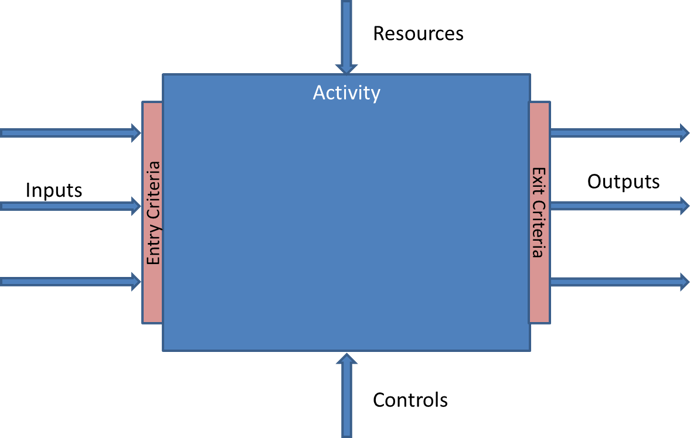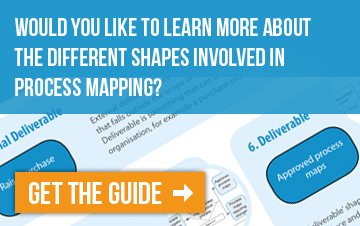The terms process mapping, process improvement and business processes are used all the time by quality and improvement professionals; but what is a process? Triaster partner, Terry Giles, from Terry AG Consulting (previously Information Risk Analyst for Barclays Direct amongst others) explains.
Definition of a Process

A process comprises of several entities as shown in the diagram below:
A definition of a process is: an activity which converts an input into an output.
These terms are best understood by describing each input and output using a noun and each activity using a verb, however, this still only provides part of the story.
Some More Detail About Processes
Outputs
The outputs that are produced by a process come with an expectation that they will be as specified; In other words there are some criteria to be met for them to be useful.
So we go from three entities (inputs, outputs and activity) to four:
- Inputs
- Outputs
- Activities
- Exit Criteria
Inputs
Going one stage further, we need to consider how the transformation of the inputs to outputs will be carried out.
The activity needed to carry out this transformation must have two types of inputs:
- Consumable inputs
- Non-consumable inputs - which I have labelled as resources in my diagram.
Resources
Resources are anything that is used within the activity, but is not changed by the activity.
Taking the process of making a cup of tea as an example; the tea leaves or bag, water, milk, and sugar would be consumable inputs, whilst the cup, spoon, kettle and the person making the tea would be resources.

Looking at the diagram above there are two further entities; the controls and entry criteria.
Entry criteria
Working on the GIGO (garbage-in-garbage-out) principle, entry criteria are needed to ensure that inputs are of sufficient quality. From the tea example above, the water used to make the tea would need to be as near boiling as possible. It is always good practice to specify what the minimum entry criteria are, rather than assuming that they will meet the needs of the process.
Controls
The final entity is controls. These cover a range of things that must be in place during the activity. Good examples would be health and safety considerations or legal and regulatory requirements.
A good process description would cover all of these entities to ensure that the outputs are as expected and consistently produced.
If you would like to learn more about the shapes most commonly used in process mapping, download our Process Mapping Shapes guide:
Related Articles:
How To Process Map: A Tutorial (Video)
Business Improvement: Pros and Cons of a Process Approach
Written by Terry Giles
Terry Giles is a consultant for TerryAG Consultancy. He has a great deal of experience in developing Business Management Systems based around a variety of models including ISO 9001, TL 9000, ISO 14001, EFQM, Baldrige, CMMi, ITIL, RiskIT and CobiT 4.1 & 5.

